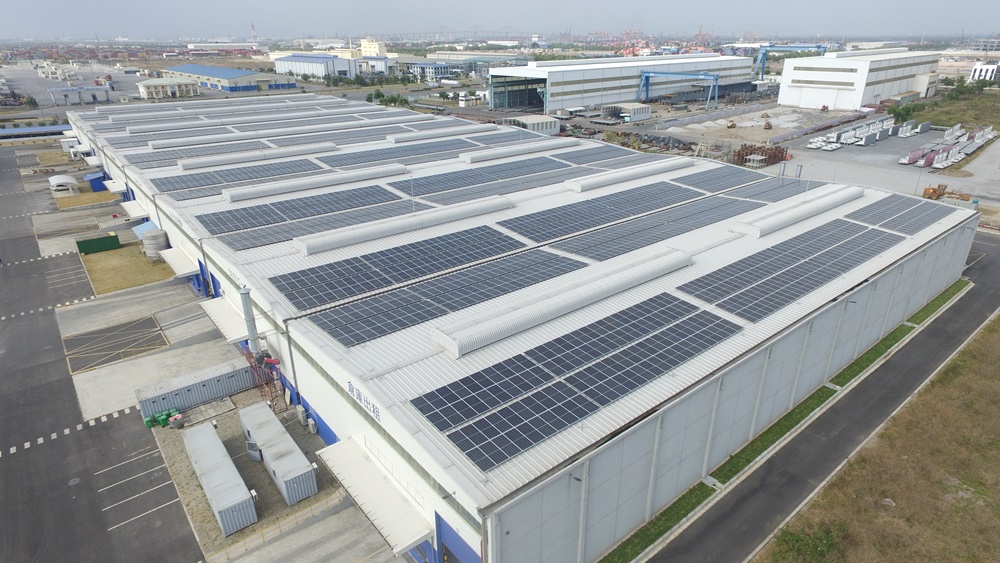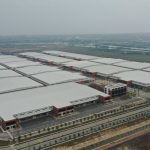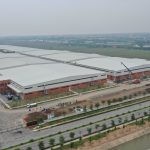More about Vietnam country such as location in Vietnam, weathers, incomes, workforce, industrial parks, incentive tax, logistic, ports, FDI…with 5 things to look for when renting a factory in Vietnam
Vietnam: A Rising Economic Power and Key Considerations for Renting a Factory in Vietnam
Vietnam, located in Southeast Asia, has become one of the fastest-growing economies in the world. This dynamic country, bordered by China to the north, Laos and Cambodia to the west, and the South China Sea to the east, offers many opportunities for businesses looking to expand or invest in the region. As more international companies seek to establish a presence in Vietnam, understanding the 5 things to look for when renting a factory in Vietnam is essential for a successful investment strategy. This article will discuss Vietnam’s location, climate, workforce, industrial parks, tax incentives, logistics infrastructure, and Foreign Direct Investment (FDI), all while highlighting the 5 things to look for when renting a factory in Vietnam.

1. Location in Vietnam and Its Impact on Renting a Factory in Vietnam
Vietnam’s geographic location plays a pivotal role in its rise as a manufacturing hub in Southeast Asia. Situated on key international shipping routes, Vietnam serves as a gateway to both regional and global markets. As a result, demand for industrial space, particularly factories, has surged in cities like Ho Chi Minh City, Hanoi, and Hai Phong. When considering 5 things to look for when renting a factory in Vietnam, location is a key factor to keep in mind. Proximity to major ports and transportation hubs will help businesses reduce logistical costs and increase efficiency.
For example, Ho Chi Minh City is one of the most attractive areas for renting factories in Vietnam due to its proximity to the Tan Cang-Cat Lai port, making it a perfect spot for manufacturers looking to streamline their supply chain. Companies should ensure they consider location first when exploring 5 things to look for when renting a factory in Vietnam. Understanding the surrounding infrastructure will help businesses thrive. Location is undeniably one of the most important 5 things to look for when renting a factory in Vietnam.
In fact, 5 things to look for when renting a factory in Vietnam include evaluating the city’s logistics infrastructure, such as highways, ports, and transport networks, which can significantly influence production timelines and operational costs. Location should always be a top priority when analyzing 5 things to look for when renting a factory in Vietnam.
2. Weather Conditions in Vietnam and How They Affect Factory Operations
Vietnam experiences a tropical monsoon climate, with distinct wet and dry seasons. The weather varies significantly across the country, from the cooler, temperate climate in the north to the hot, humid weather in the south. The weather can impact factory operations, so understanding the climate is critical when considering 5 things to look for when renting a factory in Vietnam.
Factories located in southern Vietnam, such as those in Ho Chi Minh City and Binh Duong, may face higher humidity levels, which can affect machinery and inventory storage. On the other hand, northern areas, including Hanoi, have cooler winters, which could be beneficial for certain types of manufacturing processes. It is important to assess these climatic factors and how they align with the operational needs of your factory when identifying the 5 things to look for when renting a factory in Vietnam.
Additionally, manufacturers should consider how weather may affect logistics and delivery times. These environmental factors will play into the 5 things to look for when renting a factory in Vietnam. As you evaluate 5 things to look for when renting a factory in Vietnam, the climate should factor into long-term operational planning.
3. Vietnam’s Economic Growth and Its Influence on Factory Rentals
Vietnam has achieved impressive economic growth, with a rapidly growing GDP and increasing levels of Foreign Direct Investment (FDI). As a result, the demand for industrial properties, especially factory space, is rising. When evaluating the 5 things to look for when renting a factory in Vietnam, businesses should consider the economic stability and potential for growth. A stable economy with growing sectors such as manufacturing, technology, and logistics makes Vietnam an attractive destination for factory rentals.
The government’s focus on industrialization and exports further boosts demand for factories for rent in key areas like the south of Vietnam. The development of industrial parks and economic zones has been crucial in supporting the expansion of businesses. As Vietnam continues to grow, the 5 things to look for when renting a factory in Vietnam should include factors like proximity to growth centers, tax incentives, and access to skilled labor.
4. Workforce and Labor Market in Vietnam
5 Things to Look for When Renting a Factory in Vietnam and one of the main advantages of renting a factory in Vietnam is the country’s abundant and young workforce. With a population of over 96 million and a median age of around 30 years, Vietnam offers a highly competitive and skilled labor force. As businesses look to scale operations, the availability of labor plays a crucial role in the decision-making process for renting a factory.
When considering 5 things to look for when renting a factory in Vietnam, businesses should assess the availability of skilled workers in the region. For example, areas such as Ho Chi Minh City, Binh Duong, and Dong Nai are known for their manufacturing sectors and have large pools of skilled labor, which is a key factor in ensuring efficient production. Renters should also consider the wage levels and labor laws, as these can impact operational costs.
To find the best fit for their operations, companies should conduct a detailed workforce assessment in their chosen area, which should be one of the 5 things to look for when renting a factory in Vietnam. A well-trained and affordable workforce can make or break a factory’s profitability, so understanding this factor is a top priority when looking at the 5 things to look for when renting a factory in Vietnam.
5. Industrial Parks and Economic Zones in Vietnam
Industrial parks and economic zones are vital to Vietnam’s industrialization strategy. These zones provide businesses with access to world-class infrastructure, including transportation networks, utilities, and tax incentives. When considering 5 things to look for when renting a factory in Vietnam, industrial parks and economic zones should be top of mind. They offer a ready-made environment for businesses, with convenient locations near ports, highways, and major cities.
For example, the Saigon Hi-Tech Park in Ho Chi Minh City and the Hai Phong Economic Zone are popular areas for renting factories. These zones are equipped with modern facilities and offer a range of support services for businesses. The benefits of locating a factory in an industrial park go beyond infrastructure, as the government often offers tax incentives to attract foreign investment. Understanding how these zones affect the 5 things to look for when renting a factory in Vietnam can help businesses make a more informed decision.
6. Tax Incentives for Factory Rentals in Vietnam
The Vietnamese government has introduced a variety of tax incentives to attract foreign investment and encourage economic development. These include corporate tax reductions, exemptions, and preferential rates for businesses operating in specific industries or areas. When considering 5 things to look for when renting a factory in Vietnam, it is important to understand the local tax policies.
For example, businesses operating in industrial parks or special economic zones may be eligible for significant tax breaks. These incentives are designed to reduce operational costs and improve profitability, making factory rentals more affordable in the long run. By factoring in the impact of these tax incentives, businesses can better assess the 5 things to look for when renting a factory in Vietnam.
These tax benefits are critical when deciding on a factory rental location. Without proper research on the incentives, businesses may miss out on opportunities that would align with their budget and long-term strategy, making it even more crucial to consider 5 things to look for when renting a factory in Vietnam.
7. Logistics and Transportation Infrastructure in Vietnam
Vietnam’s logistics and transportation networks are continuously improving, making the country an increasingly attractive destination for manufacturers. Access to major highways, ports, and airports is essential when renting a factory. For example, Ho Chi Minh City is home to Tan Cang-Cat Lai Port, one of the busiest in the region, which facilitates efficient import and export operations. When evaluating 5 things to look for when renting a factory in Vietnam, proximity to transportation hubs should be a key consideration.
Factories located near major ports or highways will benefit from reduced logistics costs and faster delivery times. Logistics is crucial for manufacturers, and businesses must consider whether the factory location allows for easy access to these critical infrastructure components. The logistics network is a significant factor in shaping 5 things to look for when renting a factory in Vietnam.
8. Foreign Direct Investment (FDI) and Factory Rentals in Vietnam
Vietnam has attracted significant levels of Foreign Direct Investment (FDI) in recent years, thanks to its favorable business environment and strong growth prospects. As FDI continues to pour into the country, demand for industrial properties, including factories for rent, is expected to increase. When considering 5 things to look for when renting a factory in Vietnam, businesses should take into account the rising levels of FDI in various sectors such as manufacturing, logistics, and technology.
The influx of FDI has driven the development of industrial parks and created new opportunities for factory rentals. Companies looking to establish operations in Vietnam should carefully assess the potential for growth in their sector and the availability of suitable factory spaces when considering the 5 things to look for when renting a factory in Vietnam.
9. Environmental Considerations When Renting a Factory in Vietnam
5 Things to Look for When Renting a Factory in Vietnam as sustainability becomes an increasingly important issue for businesses around the world, environmental considerations should also be a key factor when renting a factory in Vietnam. Companies should assess the environmental impact of their factory operations and ensure compliance with local environmental regulations. Understanding how these regulations affect the 5 things to look for when renting a factory in Vietnam can help businesses mitigate risks and operate responsibly.
For example, some industrial parks in Vietnam offer green certifications and sustainable building practices, which can be a major draw for companies looking to reduce their environmental footprint. Ensuring that the factory meets these environmental standards is an important part of the 5 things to look for when renting a factory in Vietnam.
10. Rental Costs and Long-Term Investment in Factory Rentals
Rental costs are a significant consideration when evaluating 5 things to look for when renting a factory in Vietnam. While industrial spaces in major cities like Ho Chi Minh City and Hanoi may be more expensive, the demand for factory rentals is increasing, making them an attractive long-term investment. Businesses should carefully assess the rental price in relation to the long-term potential of the location, factoring in future growth, tax incentives, and logistical advantages.
The costs and long-term rental outlook should be considered as part of the 5 things to look for when renting a factory in Vietnam. This helps businesses manage expectations and make strategic decisions regarding factory rental arrangements in Vietnam.





